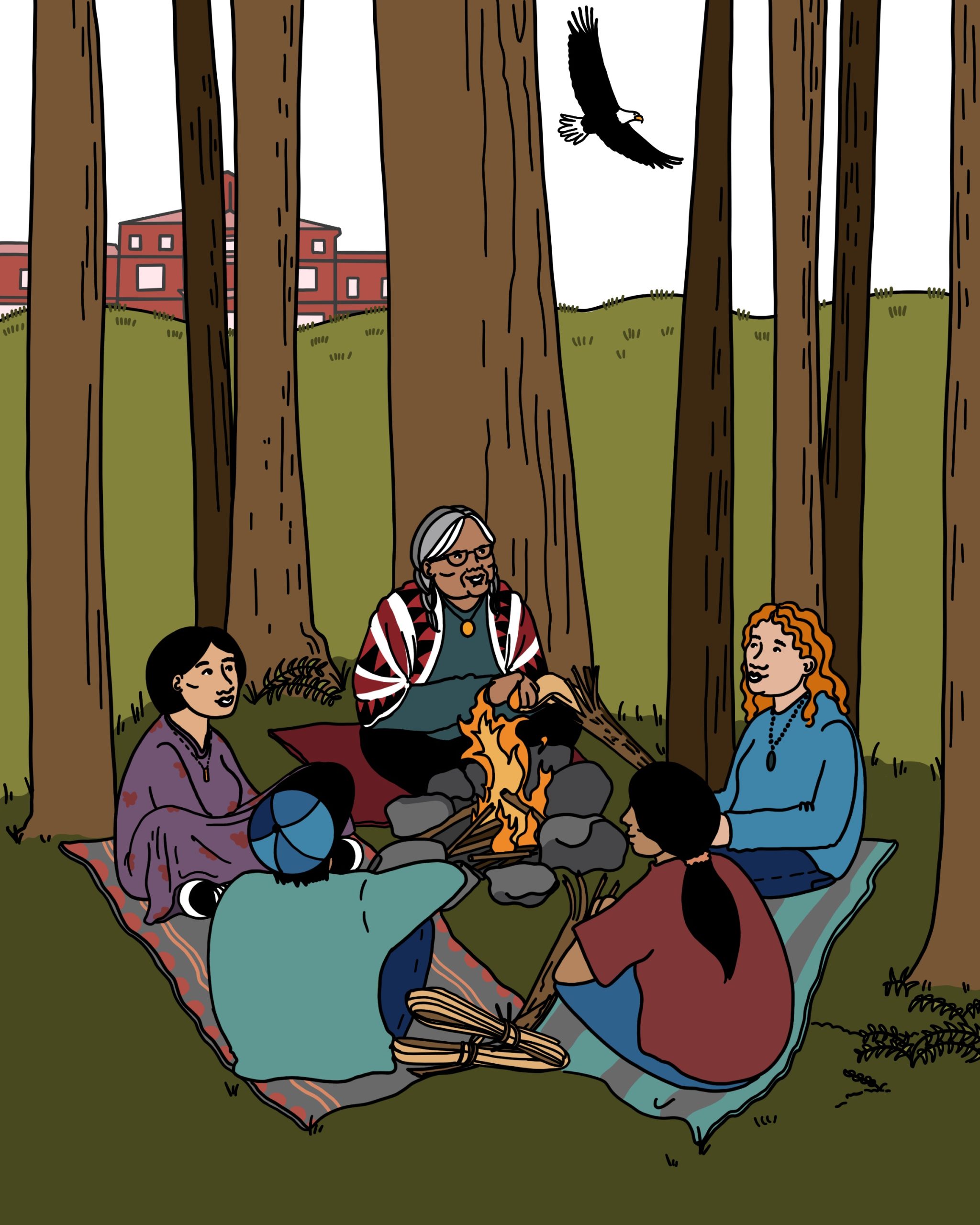Lead Land-Based Learning

“Language and culture go together. Using our language connects us to our ancestors and the land.”
—Elder Amelia Washington
“Reclaiming my culture nourishes my soul, helps me feel grounded and secure, and helps my mental health.”
—Taylor Devine
“Culture and language is so important. This is our grounding to the Natural Law of the Universe, as we are caretakers of Mother Earth.”
—Elder Darlene McIntosh
Reflection Questions
All Elders are teachers who are strongly committed to sharing their knowledge and showing others how to respect the natural world and traditional ways. They bring new perspectives and ways of teaching to post-secondary environments through land-based learning, which involves active and participatory learning on the land and recognizes that land and water, culture, and language are all deeply connected.
- Do you have many opportunities for land- or water-based learning where your post-secondary institution resides?
- How can you learn more about the traditional protocols and practices of engaging with the land, water, and natural resources?

